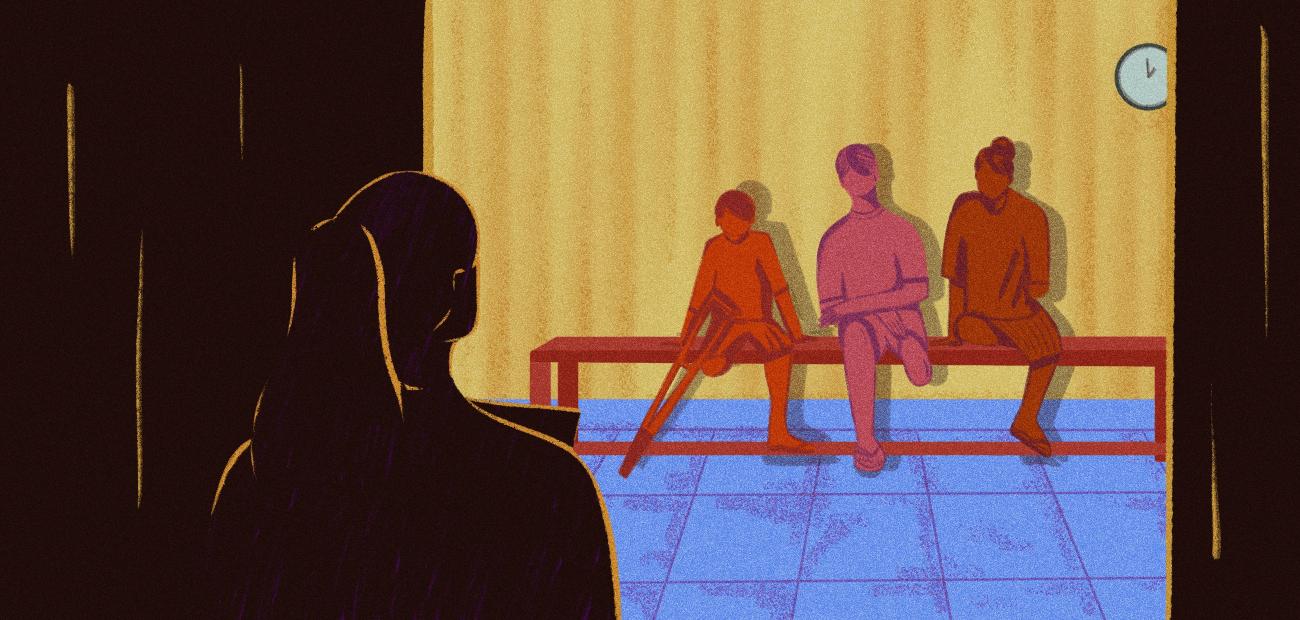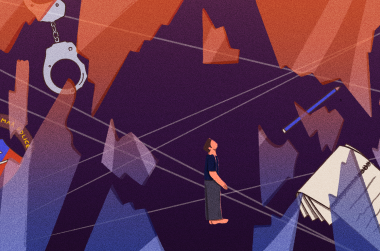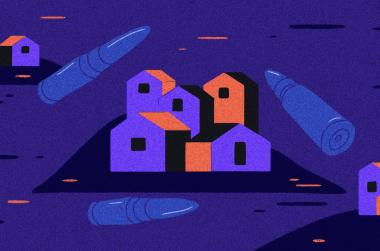It could be a farm accident or a car crash or, increasingly, a mortar blast. Those who make it across the border from Myanmar into Thailand with life changing injuries can seek help from Kanchana Thornton and her colleagues - and their 3D limb printing machine.
The 56-year-old trained nurse, who was born in Thailand and then studied and worked as an emergency room nurse in Australia, runs The Burma Children Medical Fund, which has for years treated those in need, both adults and children and regardless of their nationality or race.
As conflict in Myanmar increases following the military coup in 2021, Thornton says she expects more and more people will make the desperate journey across the border to seek medical attention at her small clinic.
The world must act, she says.
"When will the international community stop going from one conference to another talking about the situation and start acting and advocating to have a humanitarian corridor and no-fly zones put in place? If they don’t Burma will be in the grip of a massive humanitarian crisis," she says.
The following interview has been edited for length and clarity.
What is the situation at the moment?
People in Myanmar really need help right now. It has been two years of struggle, over 1.5 million people are internally displaced with no international support. These are people with no shelter, no food, no security. Children are living in the jungle. They should be going to school. Old people should enjoy their life in their village, not be running away from air strikes.
People come across the border because the army is bombing their villages. They have no home, they have no hospital, doctors are being killed, hunted, and jailed. Villagers hope they can find a safe haven in Mae Sot [Thailand].
For people with weapon wounds, we help with surgery, we help with wheelchairs, and then we help with 3D printing if they need it.
We currently have 36 cases for prosthetics, of which 12 are from conflict areas - tomorrow there will be more people.
One of our patients lost his eye and two arms. We designed and printed two arms for him and now he is able to feed himself, brush his teeth and drink water - he’s happy and we were pleased we could help him.
Why do you think it’s important to help Burmese people?
Our mission is to provide healthcare for everybody, regardless of race, religion or ethnicity.
The Myanmar Army failed to provide good health care or good education for its people. Instead, it spent much of the country’s budget on war weapons. Our patients tell us they’ve travelled to different hospitals, without success, to try to get treatment - governments and military have failed them.
People with money go to Bangkok, Singapore, but what about the people who haven't got any money? They also deserve to be looked after. Everybody should have the right to health care.
One of our biggest challenges is patients that cannot access our services because they might get arrested on the way because they don’t have documentation.
When did you start providing healthcare on the Thai/Myanmar border?
In 2000 my husband and I travelled to the border. He was training journalists and writing. I spent time at Mae Tao Clinic, taking a look at the work it was doing. Dr. Cynthia (who runs the clinic) asked me if I would like to come and work with her and my response was that if I could be of help, then I would do it.
I went back to Australia and resigned from my job at a large inner-city hospital, to volunteer at Dr. Cynthia’s Clinic. I started at the children's outpatient department to help train and build up the capacity of the medics. But some of the children needed complex surgery that the clinic could not provide, like a baby born with congenital birth defects, another with a hole in the heart, etc.
Initially a group of doctors helped set up the Burma Children Medical Fund in 2004. Two years later I took over the program. Over time I came to learn that we cannot just help the children. The parents also need help.
We now help with gynaecological cases, provide wheelchairs to people with disabilities, run reproductive health services for women, and we also have a vision screening program for villages in Thailand and in Myanmar. Now we have added the 3D prosthetic program for people who have lost their upper limbs.
How did you start the prosthetic programme?
I had a patient - a young boy who wanted to go to school but could not because he was born with no arms. I thought if I could make an arm for him, then he could write and go to school.
I came across an organisation called Thai Reach in Khon Kaen, Thailand, doing 3D printing. I contacted them and asked if they could teach my staff. They said yes and explained, ‘There's a machine that prints plastic and could turn it into a hand and arm that you could use to grab hold of things.’
We started this programme in 2019. We have now treated all sorts of people – a chef, a musician, an artist, and those young people taking up arms to fight for the country and were hit by explosions. There was an 18-year-old boy who lost his arm because of bone cancer; farmers who had agricultural accidents; people driving away from airstrikes and their cars turned over and they got trapped and lost their arms; and other road accidents.
We stay with the patient and let them try it on. And we take advice from them to see how to adjust it so it’s a comfortable and has a workable fit.
If you walk in and say you need an arm, we will try to do it for you.
For us to give them this hand is to give them hope. A lot of young kids who have lost limbs have also lost their self-esteem. With a 3D arm they are happy with and that they can use, their self-confidence improves.
Unfortunately, because of Covid-19 restrictions across the country, I’m unable to locate the young boy who pushed me to start the programme.
What changes did you see after the country began to open up from 2012?
After the country opened up, we thought we would be able to treat a lot of patients at an earlier stage.
Sometimes patients come in at a late stage in their illness and as a nurse, I know that if they had come earlier, we could have helped them. But a patient coming in when the disease has reached a later stage can end up dying while under my care.
From 2014 to 2020, I was travelling back and forth across the border, spending up to six months in Burma with my team. We worked with great people - great doctors, monks, charities and temples that filled in the gaps in the country’s health care.
In February 2020 I took my team to Magway. After we finished a week of vision screening, wheelchair fitting, reproductive health and surgical cases, I went with another team to Ayeyarwady, to Hinthada, to deliver an ultrasound machine and fit prosthetic hands.
That was the last time I was to go into Myanmar.
What has happened over the last few years?
When covid hit, I worried about my patients that needed surgery in 2020, but now they could not come across because the country was closing down. We started providing financial support to our partners inside - buying oxygen concentrators and medicine and setting up emergency clinics for people in need of help.
And then the 2021 coup (happened). We tried to contact everybody we knew to see if they were safe. The only thing I could think of was how our partners and patients inside would manage.
What about those who cannot travel?
Because patients cannot come to the Thai side, we work with partners inside Burma to help treat them. We are in close contact with our old patients to send them medicines. I have to thank my team and donors that believe in what we do and trust in us to continue with our work.
My main concern is the landlocked areas - Magway with over 100,000 displaced people, Sagaing, nearly 600,000. What's going to happen to them? What's going to happen to all the children in those areas? These displaced people are in desperate need of shelter, food, medicine, clean drinking water and clothing.
Thailand has been sympathetic. Thailand’s healthcare system is giving a lot of help to the influx of people that come across the border, but I think the government and ASEAN will need to think about long term solutions.
International organisations that care about the people of Burma need to start doing something. Deliver humanitarian support to the people inside that are struggling right now. There are many who are forced to live in the jungle. People are starving. Medicine and food prices are increasing, wages are worth less. People are dying. Do something. Get in there and put pressure on the army that took illegal control of the people’s country.
For more information about Burma Children Medical Fund and to donate, click here
Artwork by JC who is receiving support from The Kite Tales to produce illustrations.





